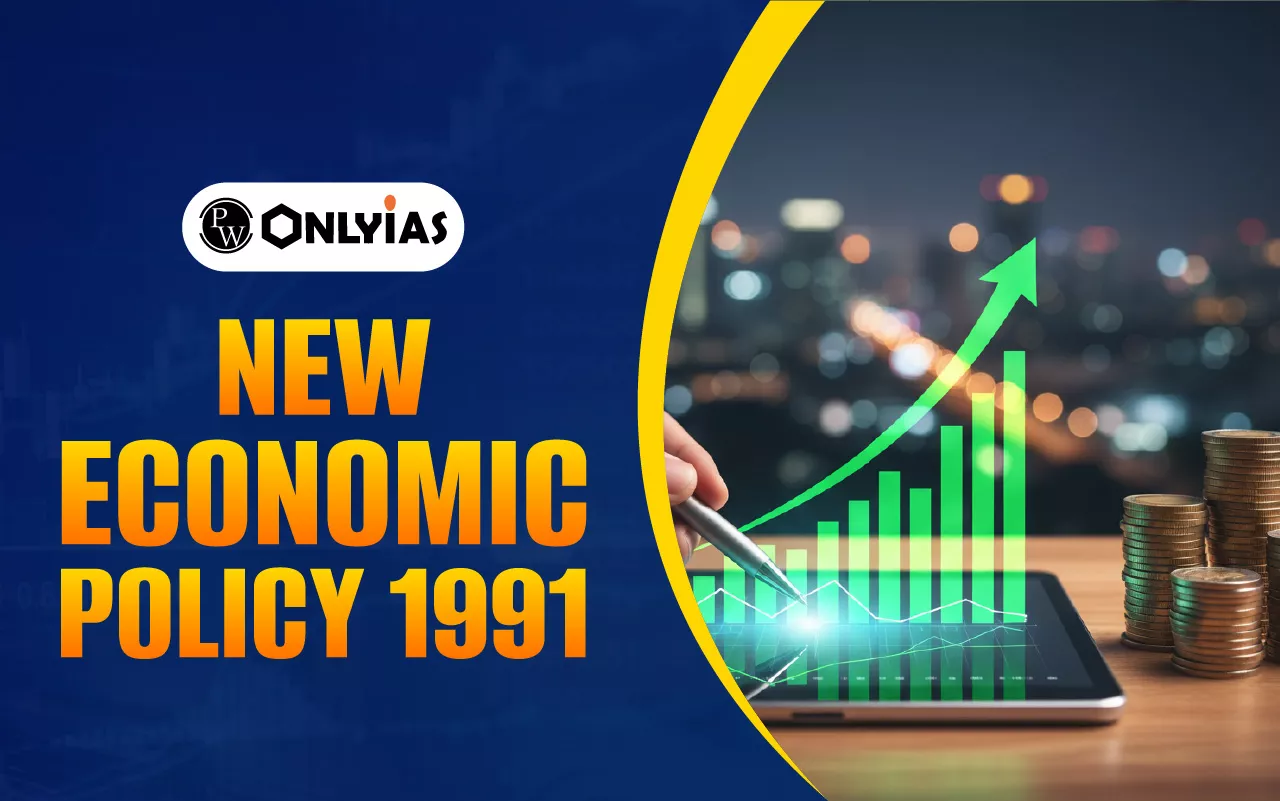New Economic Policy 1991 introduced LPG reforms (Liberalization, Privatization, and Globalization) to rescue India from a severe economic crisis. Implemented under P. V. Narasimha Rao and Dr. Manmohan Singh, it shifted India toward a market-oriented economy, boosting GDP growth (6–7%), FDI inflows ($81 billion in FY2024-25), and foreign reserves ($704.89 billion as of Sept 2024). This reform marked India’s global economic integration and laid the foundation for long-term growth and modernization.

New Economic Policy of 1991 was a key moment in India history. It brought a major change, moving the country from a state-controlled, inward-focused economy to a market-driven, globally connected one. Introduced on July 24, 1991, under Prime Minister P.V. Narasimha Rao, the policy aimed to encourage private investment, liberalize trade, and open India to the world.
Narasimha Rao and Finance Minister Dr. Manmohan Singh, the NEP was a set of structural reforms designed to combat an unprecedented economic crisis.
The new economic policy core philosophy centered on Liberalisation, Privatisation and Globalisation (LPG Reforms), aiming to improve productivity, reduce government restrictions, and integrate the Indian economy with the rest of the world. This policy was crucial for building foreign exchange reserves, encouraging global trade and accelerating the country’s economic growth rate.
New Economic Policy 1991 is a set of economic reforms that fundamentally restructured the Indian economy. Its primary goal was to bring macroeconomic stability and improve the country’s economic efficiency and global competitiveness.
The policy consisted of two major types of measures:
The economic crisis in India 1991 was the direct trigger for the introduction of the New Economic Policy 1991. A combination of domestic and external factors pushed the Indian economy to the brink of collapse, necessitating radical economic reforms 1991.
The five main reasons for adopting the NEP 1991 were:
| The Economic Crisis in India in 1991 Why NEP was Introduced | |
| Crisis Indicator | Description |
| Severe Balance of Payments (BoP) Deficit | Imports were greater than exports, leading to a huge foreign debt burden. The debt-service ratio widened to nearly 30%. |
| Depleted Foreign Exchange Reserves | India’s foreign reserves were so low that they could barely finance three weeks’ worth of essential imports. The country was close to defaulting on its international loan obligations. |
| High Fiscal Deficit | Government expenditure was significantly higher than its revenue, leading to excessive borrowing and a fiscal deficit that rose sharply. |
| Rising Inflation Rate | The inflation rate had soared from 6.7% to a staggering 16.7% due to high fiscal deficits and supply issues. |
| Gulf War Crisis (External Shock) | The 1990 Gulf War led to a sharp rise in world oil prices, which severely increased India’s oil import bill and worsened the trade account. |
The New Economic Policy 1991 is famously known as the LPG Reforms because it rests on three core branches of New Economic Policy 1991: Liberalisation, Privatisation and Globalisation.
Liberalisation refers to the removal of entry and growth restrictions on private sector firms, freeing them from direct government control.
Privatisation is the process of transferring ownership and control of Public Sector Undertakings from the government to the private sector.
Globalisation refers to the integration of the Indian economy with the global economy, allowing for the free flow of goods, services, capital, technology and human resources across borders.
Check Out UPSC CSE Books
Visit PW Store
The core New Economic Policy 1991 objectives were centered on overcoming the crisis and building a stable, competitive economy for the future.
Ready to boost your UPSC 2026 preparation? Join PW’s UPSC online courses today!
New Economic Policy 1991 was full of economic reforms and its intention was to liberalize, privatize and internationalize the Indian economy. It was the shift to the market-oriented and globally integrated system instead of the state one.
The LPG reforms include Liberalization, Privatization and Globalization.
The key features include: a focus on LPG reforms, reduction in the government control, making foreign investment attractive, the establishment of a market-based banking and financial sector, the stimulation of exports through the usage of SEZs and the opening-up to the international economy.
The NEP 1991 made the difference in the GDP growth, the inflow of the foreign direct investments, the growth of the private sector, the growth in the foreign exchange reserves, the reduction in poverty, and integration of India into the global economy.

<div class="new-fform">
</div>